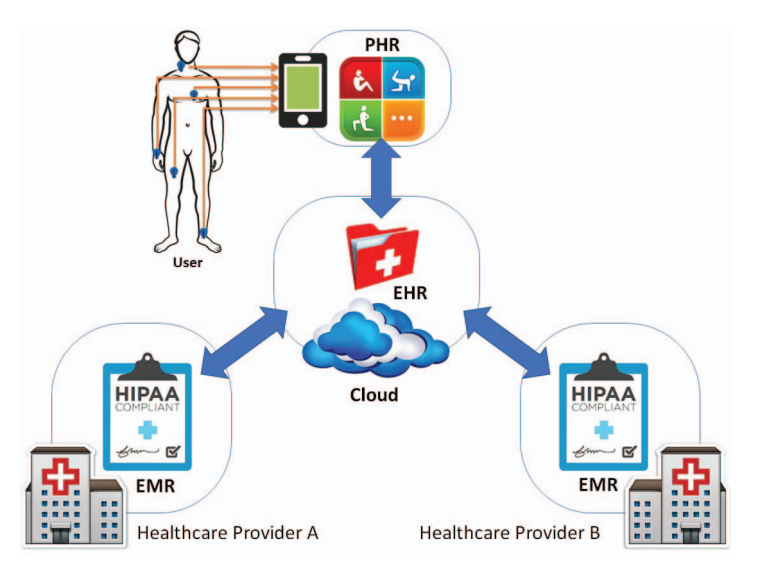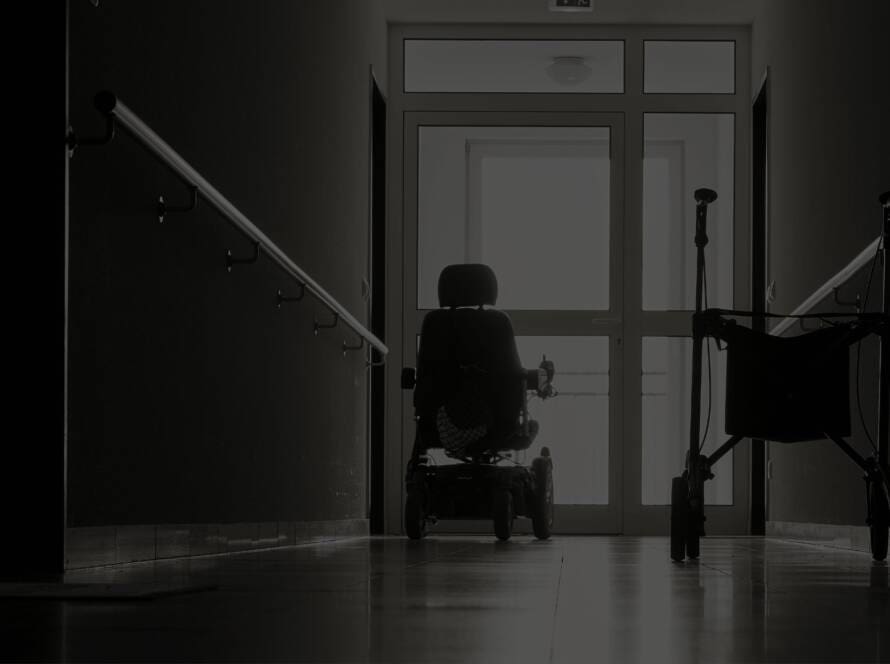Birth injuries can have devastating consequences for families. In the United States, approximately 7 out of every 1,000 births result in some form of birth injury. I remember when my colleague’s daughter suffered a birth injury – it changed their lives forever. This guide will explore the multifaceted nature of birth injury claims, providing valuable insights for those navigating this challenging terrain.
According to the Centers for Disease Control and Prevention (CDC), birth injuries occur in about 7 of every 1,000 babies born in the United States. This statistic underscores the importance of understanding the legal and medical aspects of birth injuries.

Source: Chesapeake Regional Healthcare
The Psychological Impact on Families
Birth injury claims extend far beyond physical and financial realms. They profoundly affect the mental health of entire families. This often-overlooked aspect requires a multifaceted approach to support and compensation.
Trauma and Guilt in Parents
Parents of children with birth injuries often experience severe trauma and unwarranted guilt. These feelings can lead to long-term psychological issues if not addressed properly. It’s crucial to recognize and address these emotional challenges as part of the overall birth injury claim process.
Post-Traumatic Stress Disorder (PTSD) in Mothers
Mothers who witness traumatic births may develop PTSD. This condition can significantly affect their ability to bond with their child and function in daily life. Recognizing and treating PTSD in mothers is crucial for both the mother’s well-being and the child’s development.
I’ve seen firsthand how PTSD can impact mothers after a traumatic birth. One client struggled to connect with her baby for months, plagued by flashbacks of the delivery room. It’s a stark reminder of why mental health support is just as important as physical care in these cases.
Paternal Depression and Anxiety
Fathers are often overlooked in the aftermath of birth injuries. They may struggle with depression and anxiety, which can impact family dynamics and their ability to provide support. Addressing paternal mental health is essential for maintaining a stable family environment.

Source: Healthline
Sibling Adjustment and Family Dynamics
The presence of a child with a birth injury can significantly alter family dynamics. This is particularly true for siblings, who may feel neglected or overwhelmed by the changes in their family life. Addressing sibling needs is crucial for maintaining overall family well-being.
Sibling Counseling and Support Programs
Specialized programs for siblings of children with birth injuries can help them cope with changes in family dynamics. These programs can prevent long-term emotional issues and foster resilience in siblings. Incorporating sibling support into the overall care plan is essential for comprehensive family care.
We recently worked with a family where the older sibling was acting out at school. After implementing a sibling support program, we saw a marked improvement in their behavior and overall family harmony. It’s a testament to the importance of addressing the needs of all family members.

Source: Arkansas Relationship Counseling Center
| Psychological Impact | Mothers | Fathers | Siblings |
|---|---|---|---|
| Common Issues | PTSD, Depression | Depression, Anxiety | Guilt, Resentment |
| Symptoms | Flashbacks, Avoidance | Irritability, Withdrawal | Behavioral Issues |
| Support Strategies | Trauma-focused Therapy | Support Groups | Counseling Programs |
The Role of Genetic Counseling in Birth Injury Claims
Genetic counseling plays a crucial, yet often underappreciated role in birth injury claims. It helps distinguish between genetic conditions and injuries caused by medical negligence. This distinction is vital for determining the validity and direction of a birth injury claim.
A study on birth injury legal statistics found that out of all medical malpractice claims paid between 2009 and 2014, about 25% were related to obstetrics and gynecology. This highlights the significant impact of birth injuries on medical malpractice cases.
Preconception Genetic Testing
Understanding the importance of preconception genetic testing can help establish whether certain conditions were preventable or inherent. This information can significantly influence the validity of a birth injury claim. Preconception genetic testing is becoming increasingly important in both medical care and legal contexts.
In a recent case, preconception genetic testing results played a pivotal role in determining the outcome. The test results showed a genetic predisposition to a certain condition, which ultimately influenced the court’s decision on liability.

Source: Raising Children Network
Postpartum Genetic Analysis
Genetic testing after a birth injury can provide critical information for both medical treatment and legal proceedings. This analysis can potentially alter the course of a claim by providing clarity on the cause of the injury. It’s an essential tool in the complex landscape of birth injury claims.
Ethical Considerations in Genetic Testing
The use of genetic information in legal proceedings raises ethical questions about privacy, discrimination, and the potential for misuse of sensitive data. Balancing the need for information with ethical considerations is a complex aspect of birth injury claims that requires careful navigation.
We recently handled a case where genetic testing revealed information about other family members not directly involved in the claim. It sparked a heated debate about the ethical implications of using this information in court. These are the kinds of complex issues we grapple with daily in birth injury litigation.
Source: YouTube
Technological Advancements in Birth Injury Prevention and Detection
Cutting-edge technologies are reshaping the landscape of birth injury claims. They’re providing new methods of prevention, early detection, and evidence gathering. These advancements are changing both medical practices and legal strategies in birth injury cases.
Artificial Intelligence in Fetal Monitoring
AI-powered fetal monitoring systems can detect potential complications earlier and more accurately than traditional methods. This technology has the potential to significantly reduce the incidence of birth injuries. However, it also introduces new complexities in determining the standard of care in birth injury cases.
I recently consulted on a case where an AI-powered fetal monitoring system flagged potential distress, but the medical team didn’t act immediately. It raised interesting questions about the interplay between AI recommendations and human judgment in establishing negligence.
Legal Implications of AI-Assisted Decision Making
The use of AI in medical decision-making during childbirth raises questions about liability and the standard of care in birth injury cases. As AI becomes more prevalent in healthcare, legal frameworks will need to adapt to address these new challenges.

Source: Northwestern University Feinberg School of Medicine
Blockchain for Medical Record Integrity
Blockchain technology can ensure the immutability and transparency of medical records. This is crucial for establishing timelines and responsibility in birth injury claims. The adoption of blockchain in healthcare records management could significantly impact how birth injury cases are built and argued.
Smart Contracts in Settlement Agreements
Blockchain-based smart contracts could revolutionize how birth injury settlements are structured and executed. They can ensure long-term care provisions are met, providing greater security and transparency for families affected by birth injuries.
We’re currently exploring the use of smart contracts in a high-profile birth injury case. The potential for automatic, transparent execution of settlement terms is exciting, but it’s not without its challenges. It’s a prime example of how technology is reshaping our field.

Source: IEEE Computer Society
International Perspectives on Birth Injury Compensation
Examining global approaches to birth injury claims can provide valuable insights for improving the U.S. system. Different countries have developed various models for addressing birth injuries, each with its own strengths and challenges.
A recent study geared toward understanding birth injury legal statistics by Coverys, a Boston-based liability insurer, found that 80% of cases were of high clinical severity. In fact, the mother and/or infant died in 24% of the cases analyzed. These sobering statistics underscore the critical nature of birth injury cases and the need for effective compensation systems.
No-Fault Compensation Systems
Some countries employ no-fault systems for birth injuries. These systems can expedite compensation and reduce the emotional toll of litigation on families. Exploring the benefits and drawbacks of no-fault systems can provide valuable insights for potential reforms in the U.S.
The New Zealand Model
New Zealand’s Accident Compensation Corporation provides a unique approach to birth injury claims. It offers universal coverage without the need to prove fault. This model has garnered international attention for its comprehensive and non-adversarial approach.
I recently attended a conference where the New Zealand model was discussed in depth. While it has its merits, implementing such a system in the U.S. would require a massive overhaul of our current healthcare and legal frameworks. It’s fascinating to consider the possibilities, though.
| Compensation System | Pros | Cons |
|---|---|---|
| U.S. Litigation-Based | – Potential for larger payouts – Holds negligent parties accountable |
– Long legal processes – High emotional toll on families |
| No-Fault (e.g., New Zealand) | – Faster compensation – Lower administrative costs |
– Potentially smaller payouts – May reduce incentives for improving care |
| Hybrid Systems | – Balances speed and accountability – Flexibility in compensation |
– Can be complex to administer – May still involve legal challenges |
Cross-Border Birth Injury Claims
With increasing medical tourism, understanding the complexities of international birth injury claims becomes crucial for legal practitioners. These cases often involve navigating multiple legal systems and cultural contexts, adding layers of complexity to already challenging situations.
Jurisdiction and Applicable Law Challenges
Determining which country’s laws apply in cross-border birth injury cases can significantly impact the outcome and available compensation. This area of law is complex and evolving, requiring specialized knowledge and careful navigation.
We recently handled a case involving a U.S. citizen who gave birth in a European country. The jurisdictional issues were incredibly complex, requiring collaboration with international legal experts. It’s a growing area of practice that demands a global perspective.

Source: REBA Global
How Ultra Law Can Help
At Ultra Law, we understand the intricacies of birth injury claims. Our team adopts a comprehensive approach, addressing not only the legal aspects but also the psychological and long-term care needs of affected families. We remain at the forefront of technological and legal developments to provide the most effective representation for our clients.
If you’re grappling with a birth injury claim, don’t navigate this challenging terrain alone. Reach out to Ultra Law today for a consultation. We’re here to support you every step of the way, ensuring you receive the compensation and care you deserve.

Source: Modern Family Law
Key Learnings Recap
- Birth injury claims have profound psychological impacts on entire families
- Genetic counseling plays a crucial role in distinguishing between genetic conditions and medical negligence
- Technological advancements are changing both prevention and legal strategies in birth injury cases
- International perspectives offer valuable insights for improving birth injury compensation systems
- Cross-border birth injury claims present unique challenges requiring specialized expertise
The Economic Burden of Birth Injuries
Birth injuries often impose substantial financial strain on families. This encompasses long-term medical care, specialized equipment, and potential loss of income. Grasping these costs is vital for both families and legal professionals handling birth injury claims.
The financial impact of a birth injury can be staggering. I’ve worked with families facing medical bills in the millions, not to mention the ongoing costs of care and lost wages. It’s a harsh reality that underscores the importance of comprehensive legal representation in these cases.

Source: CMS.gov
Calculating Long-Term Care Costs
Accurately estimating future care costs is a critical component of birth injury claims. It’s not just about immediate medical expenses – we need to consider ongoing therapies, adaptive equipment, and potential home modifications. This forward-thinking approach ensures families receive adequate compensation to cover their
Calculating Long-Term Care Costs
Accurately estimating future care costs is a critical component of birth injury claims. It’s not just about immediate medical expenses – we need to consider ongoing therapies, adaptive equipment, and potential home modifications. This forward-thinking approach ensures families receive adequate compensation to cover their child’s needs throughout their lifetime.
The Role of Economic Experts in Litigation
Economic experts play a pivotal role in birth injury litigation. They help quantify the financial impact of the injury, including lost earning capacity and the cost of future care. Their testimony can significantly influence the outcome of a case and the compensation awarded.
In a recent case, our economic expert’s detailed analysis of future care costs was instrumental in securing a substantial settlement for our client. It’s a perfect example of how expert testimony can make or break a birth injury case.
Insurance Considerations in Birth Injury Claims
Navigating insurance coverage in birth injury cases can be tricky. We’re dealing with multiple policies – hospital insurance, physician malpractice coverage, and the family’s health insurance. Understanding how these policies interact is crucial for maximizing compensation and ensuring comprehensive coverage for the injured child.
The Impact of Healthcare Policy on Birth Injury Claims
Healthcare policies and reforms can have far-reaching effects on birth injury claims. Changes in malpractice laws, insurance regulations, or healthcare delivery systems can alter the landscape of birth injury litigation. Staying informed about these policy shifts is essential for effective advocacy in birth injury cases.
Emerging Medical Treatments and Their Legal Implications
The field of birth injury treatment is constantly evolving. New therapies, from stem cell treatments to advanced rehabilitation techniques, offer hope for improved outcomes. However, these emerging treatments also raise new legal questions about the standard of care and the calculation of damages in birth injury cases.
Stem Cell Therapy and Regenerative Medicine
Stem cell therapy represents a frontier in birth injury treatment, particularly for conditions like cerebral palsy. While still largely experimental, these treatments show promise in reducing the long-term impacts of certain birth injuries. From a legal standpoint, the potential of these therapies introduces new considerations in birth injury claims.
We recently worked on a case where the possibility of future stem cell treatment significantly impacted the compensation calculation. It’s a prime example of how cutting-edge medical advancements can reshape legal strategies.
Adaptive Technologies and Assistive Devices
Advancements in adaptive technologies are transforming the lives of children with birth injuries. From sophisticated mobility devices to cutting-edge communication tools, these technologies enhance independence and quality of life. In birth injury claims, the cost and ongoing updates of these technologies must be considered in long-term care planning.
Rehabilitation and Early Intervention Programs
Early intervention and intensive rehabilitation programs can significantly improve outcomes for children with birth injuries. These programs often involve a multidisciplinary approach, combining physical, occupational, and speech therapies. The effectiveness of these programs is increasingly recognized in both medical and legal contexts.
I’ve witnessed firsthand the remarkable progress children can make with early intervention. In one case, a child’s improved prognosis due to early rehabilitation actually altered the trajectory of the legal proceedings.
The Role of Medical Experts in Birth Injury Litigation
Medical experts are the backbone of birth injury litigation. Their testimony can make or break a case. We rely on these experts to explain complex medical concepts, establish the standard of care, and opine on causation. Selecting the right experts and effectively presenting their testimony is crucial for success in birth injury claims.
Challenges in Establishing Causation
Proving causation is often the most challenging aspect of birth injury claims. We must demonstrate that the injury was caused by medical negligence rather than unavoidable complications or genetic factors. This requires a deep understanding of both medical science and legal standards of proof.
In a recent case, the causation argument hinged on a minute-by-minute analysis of fetal heart rate patterns. The level of detail required in these cases can be staggering, but it’s often what determines the outcome.
The Battle of the Experts
Birth injury cases often come down to a “battle of the experts,” with each side presenting conflicting medical opinions. Navigating these conflicting testimonies requires skill in both medical knowledge and legal strategy. The ability to effectively cross-examine opposing experts can be a game-changer in birth injury litigation.
The Emotional Journey of Birth Injury Litigation
Birth injury litigation is not just a legal process – it’s an emotional journey for families. We witness firsthand the stress, anxiety, and hope that our clients experience throughout their cases. Providing emotional support and clear communication is just as important as our legal expertise in guiding families through this challenging time.
Balancing Legal Strategy with Family Well-being
As legal professionals, we must balance aggressive advocacy with sensitivity to our clients’ emotional needs. This might mean considering alternative dispute resolution methods or structuring settlements to provide long-term security. Our goal is not just to win cases, but to ensure the best possible outcomes for the families we represent.
I recall a case where we opted for mediation instead of trial, primarily to spare the family additional emotional stress. The decision led to a favorable settlement and allowed the family to focus on their child’s care rather than prolonged litigation.
The Importance of Client Education and Empowerment
Empowering our clients through education is a key part of our role. We strive to ensure families understand every aspect of their case, from medical terminology to legal procedures. This knowledge helps them make informed decisions and actively participate in their case strategy.
The Future of Birth Injury Claims
The landscape of birth injury claims is constantly evolving. From advances in medical technology to changes in healthcare policy, we must stay ahead of the curve. Anticipating future trends allows us to better serve our clients and advocate for necessary legal and policy changes.
Potential Reforms in Birth Injury Compensation Systems
There’s ongoing debate about reforming birth injury compensation systems. Some advocate for no-fault systems similar to those in other countries, while others push for changes within the existing litigation framework. Understanding these potential reforms is crucial for shaping the future of birth injury advocacy.
The Impact of Precision Medicine on Birth Injury Cases
Precision medicine, tailoring medical treatment to individual genetic profiles, is poised to transform birth injury prevention and treatment. This emerging field may also complicate birth injury litigation, introducing new factors in determining standard of care and causation.
We’re currently monitoring a case where precision medicine techniques were used in prenatal care. It’s raising fascinating questions about how individualized medical approaches might affect the standard of care in birth injury cases.
Closing Thoughts: The Vital Role of Specialized Legal Representation
Birth injury claims are among the most complex in medical malpractice law. They require a unique blend of medical knowledge, legal expertise, and compassionate advocacy. At Ultra Law, we’ve dedicated ourselves to mastering this challenging field, ensuring that families affected by birth injuries receive the representation they deserve.
If you’re grappling with a birth injury situation, remember that you’re not alone. We’re here to guide you through every step of the process, fighting tirelessly for your rights and your child’s future. Don’t hesitate to reach out – your initial consultation is free, and it could be the first step towards securing the support and compensation your family needs.
Contact Ultra Law today. Together, we can navigate the complexities of your birth injury claim and work towards a brighter future for your child.




